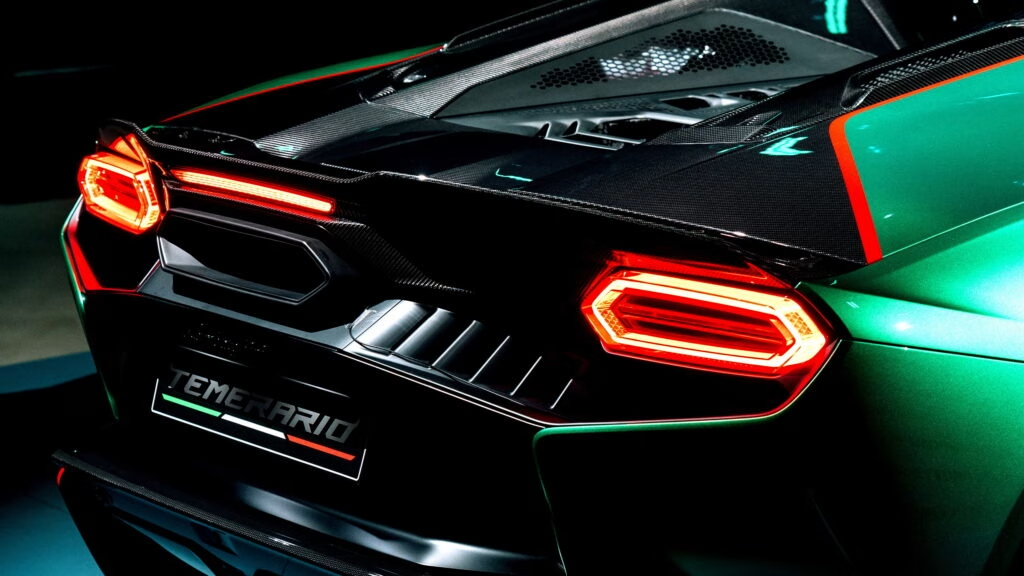What’s Changing with the Lamborghini Temerario—And Why Are Enthusiasts Buzzing?
Lamborghini’s so-called entry-level supercar, the Temerario, is anything but understated. With a jaw-dropping 907 horsepower from its plug-in hybrid V8 and triple-motor setup, it’s a rolling thunderclap. But here’s the twist: not every Lamborghini fan wants—or needs—nearly a thousand horses underfoot. That’s where the next chapter gets interesting.
Is Lamborghini Really Making a Rear-Wheel-Drive Temerario?
Yes, and this isn’t just rumor mill chatter. Lamborghini’s Chief Technical Officer, Rouven Mohr, recently hinted that a rear-wheel-drive (RWD) Temerario is in the works. This new variant would likely ditch the front electric motors, simplifying the hybrid system and sending all power to the rear wheels. Think of it as a nod to the Huracan RWD, but with a modern, electrified twist.
Why does this matter? For purists, rear-wheel drive means a more playful, engaging drive—less computer intervention, more driver skill. It also means a lighter car, which could translate to sharper handling and a more visceral connection to the road. And while the hybrid system will be less complex, don’t expect it to be a slouch: the V8 alone is good for 789 hp before any electric boost kicks in. That’s still supercar territory, no question.
How Will the Hybrid System Differ from the Current Model?
Lamborghini’s current plug-in hybrid Temerario uses three electric motors—two up front, one at the rear—paired with a twin-turbo 4.0-liter V8. The upcoming RWD version is expected to drop the front motors, making the hybrid system lighter and less powerful, but also more affordable and arguably more fun for those who love to drive.
Mohr pointed to the Porsche 911 Carrera GTS as inspiration, calling it a “super example of a completely different hybrid approach.” Translation: Lamborghini isn’t just chasing numbers. They’re exploring how hybrid tech can enhance the driving experience without overwhelming it. This could mean a smaller battery, less weight, and a car that feels more alive in your hands.
Will There Be Visual or Chassis Changes?
Absolutely. Lamborghini has a history of tweaking the looks and chassis dynamics of its RWD models to set them apart. Expect new bumpers, unique wheels, and a chassis tuned specifically for the RWD layout. The weight distribution will shift, so engineers will likely revise suspension settings to keep the car balanced and responsive.
If you’re picturing a Huracan EVO RWD with a Temerario badge, you’re not far off—but expect even more power and a more advanced hybrid system. And for those who crave track days, Lamborghini has also teased an even hotter Temerario that could top 1,000 hp, channeling the spirit of the Huracan STO with wild aerodynamics and a laser focus on lap times.
Is There Any Chance of a Pure Gasoline Temerario?
Here’s where things get nuanced. At the Goodwood Festival of Speed, Lamborghini unveiled the Temerario GT3—a race car with a detuned, non-hybrid V8, built to comply with GT3 regulations. That’s music to the ears of ICE (internal combustion engine) purists.
But for the street? Mohr was candid: “I would not completely exclude a non-hybrid, but it’s not on the priority list.” In other words, don’t hold your breath. While the race car ditches hybrid tech, Lamborghini sees hybridization as the right path for road cars, at least for now. Regulatory pressure and market demand are both pushing in that direction.
How Does This Fit into Lamborghini’s Broader Electrification Strategy?
Lamborghini’s hybrid push isn’t just about compliance—it’s about staying ahead of the curve. Mohr noted that the brand is “lucky” to have an electrified lineup at a time when “everyone is wanting a hybrid.” The numbers back him up: according to the International Energy Agency, global sales of hybrid vehicles grew by over 30% in 2023, outpacing fully electric vehicles in several key markets.
That said, the EV supercar market isn’t taking off as quickly as many predicted. Lamborghini’s first all-electric model has been delayed to 2029 due to tepid demand, and the next-gen Urus SUV is now being redeveloped as a plug-in hybrid rather than a full EV. The takeaway? Hybrids still make sense for high-performance brands—at least until battery tech and charging infrastructure catch up to the expectations of supercar buyers.
What’s the Real-World Impact for Lamborghini Fans and Owners?
For enthusiasts, the arrival of a rear-wheel-drive, lighter hybrid Temerario is a big deal. It means more choice: you can opt for the full-bore AWD hybrid if you want maximum performance, or go for the RWD if you crave a purer, more analog driving experience. And with Lamborghini keeping the door cracked open for ICE-only models—however unlikely—it’s clear they’re listening to their most passionate fans.
The big takeaway? Lamborghini’s future isn’t about perfection—it’s about smarter adjustments. Start with one change this week, and you’ll likely spot the difference by month’s end. Whether you’re a die-hard purist or a tech-forward driver, there’s something brewing in Sant’Agata that’s worth keeping an eye on.

